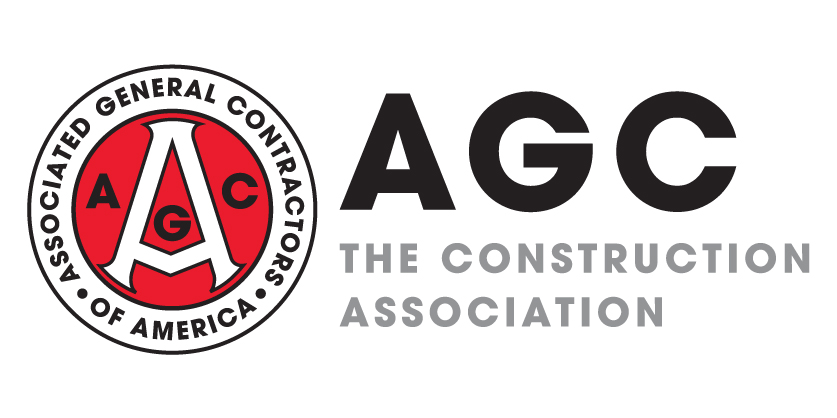
Increasing shares of contractors reported cancellations of upcoming projects, delays and disruptions to ongoing work, and layoffs due to the coronavirus pandemic, based on AGC’s latest weekly online survey, conducted April 6-9. Of the 830 respondents, of whom 19% (up from 7% in the March 30-April 2 survey) reported that an owner (including a public owner regarding its own projects) had directed them to cancel construction on a current project or one scheduled to start in the next 30 days. In addition, 65% (up from 59%) reported various causes for project delays or disruptions, including 39% who cited a shortage of personal protective equipment. Also, 42% (up from 38%) of respondents said suppliers had notified them or their subcontractors that deliveries will be late or canceled. About 40% (up from 31%) said they had furloughed or terminated workers, including jobsite workers (36% of respondents, up from 27%) but also office or other workers (18% of respondents, up from 16%). About 64% of respondents said their firms had applied for Paycheck Protection Program loans, including 10% who had already been approved and 54% who were awaiting approval; another 10% said they intend to apply. View AGC’s coronavirus website for a wide range of resources. In addition, ConstructConnect has daily updates of delayed projects by state.
On Thursday BLS posted producer price indexes (PPIs) for March, calculated from prices gathered around March 10, after economic activity had plunged in China and parts of Europe but before U.S. construction activity had slowed much. AGC posted tables showing PPIs relevant to construction. The PPI for new nonresidential building construction—a measure of the price that contractors say they would charge to build a fixed set of buildings—was unchanged from February but increased 3.7% year-over-year (y/y) from March 2019 to March 2020. Increases ranged from 2.9% y/y for new healthcare buildings to 3.3% for office buildings, 4.1% for industrial buildings, and 4.7% for schools and warehouses. Increases in PPIs for subcontractors’ new, repair and maintenance work on nonresidential buildings were closely bunched: 3.5% y/y for roofing and plumbing contractors and 3.7% for electrical contractors and concrete contractors. The PPI for inputs to construction covers both goods (55%) and services (45%), slid 0.5% in March and 0.1% y/y. The PPI for energy inputs to construction plummeted 11% and 20%, respectively. The PPI for nonenergy goods inputs increased 0.5% and 1.2%; the index for services inputs rose 0.2% and 2.1%. Items important to construction with large 1- or 12-month changes include: diesel fuel, down 12% for the month and 28% y/y; steel mill products, up 1.3% from February but down 12% y/y; copper and brass mill shapes, down 1.8% and 7.9%, respectively; and aluminum mill shapes, down 0.7% and 7.5%.
Construction employment, not seasonally adjusted, increased year-over-year (y/y) between February 2019 and February 2020 in 217 (61%) of the 358 metro areas (including divisions of larger metros) for which the Bureau of Labor Statistics (BLS) provides construction employment data, fell in 89 (25%) and was unchanged in 52, according to an analysis AGC released on Wednesday. The data covered the February 12 payroll period, before the pandemic triggered project suspensions and layoffs. (BLS combines mining and logging with construction in most metros to avoid disclosing data about industries with few employers.) The largest gain occurred in the Dallas-Fort Worth-Irving metro division (12,000 combined jobs, 8%), followed by Houston-The Woodlands-Sugar Land (9,700 construction jobs, 4%). The largest percentage gain occurred in Walla Walla, Wash. (22%, 200 construction jobs), followed by Albany-Schenectady-Troy, N.Y (18%, 3,100 combined jobs). The largest job loss occurred in the Orange-Rockland-Westchester division (-4,400 combined jobs, 10%), followed by Lake Charles, La. (-3,500 construction jobs, -15%). The largest percentage loss occurred in Danville, Ill. (-20%, -100 combined jobs), followed by Springfield, Ill. (-17%, -500 combined jobs) and Laredo, Texas (-17%, -700 combined jobs). Six metros set new lows for February construction employment; 69 set new highs, in records dating back to 1990.
Dodge Data & Analytics reported on April 2 “a scant 0.6% decline” from February to March in its Dodge Momentum Index, “a monthly measure of the first (or initial) report for nonresidential building projects in planning, which have been shown to lead construction spending for nonresidential buildings by a full year. The drop in March was present in both components of the Momentum Index – the commercial component fell 0.8%, while the institutional component was 0.2% lower. It is still very early on in the COVID-19 (Coronavirus) crisis and March’s data would not fully capture any potential impact of the pandemic on construction planning. However, it is heartening that projects continued to move into the early planning stages at a reasonable pace despite the near stoppage in economic activity over the last few weeks. What is unclear at this juncture; however, is whether projects will continue through the planning life cycle to the start stage at the same pace as before the pandemic began due to workforce issues, supply constraints, or forced moratoriums on construction from local officials.” The firm also has an interactive state map it updates daily with a nationwide count of delayed projects and links to each one.
There were 279,000 job openings in construction at the end of February, virtually matching the February 2019 total of 277,000, and the highest February total in the series’ 20-year history, BLS reported on Tuesday in its latest Job Openings and Labor Turnover Survey (JOLTS) release. Construction firms hired 341,000 employees in February, not seasonally adjusted, 11% more than the February 2019 total of 306,000. Layoffs and discharges increased by 13% y/y, to 156,000 from 138,000 in February 2019. Quits declined by 30%, to 114,000 from 164,000 in February 2019.




